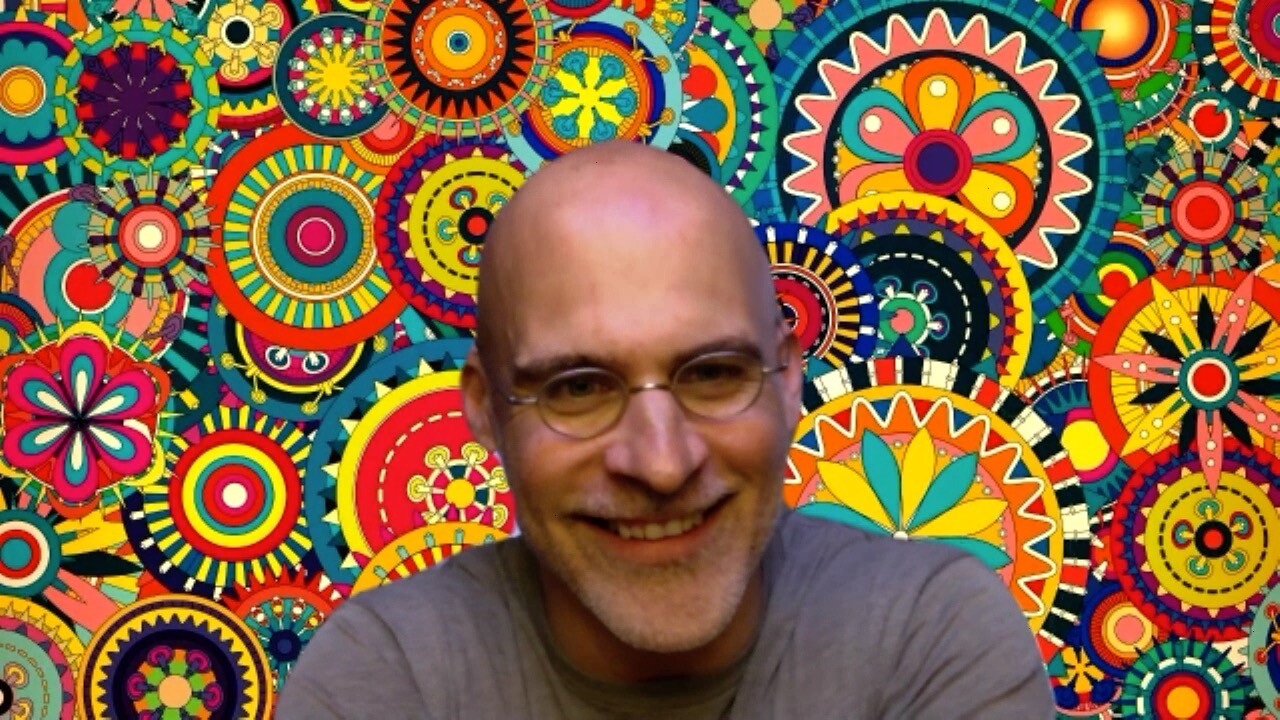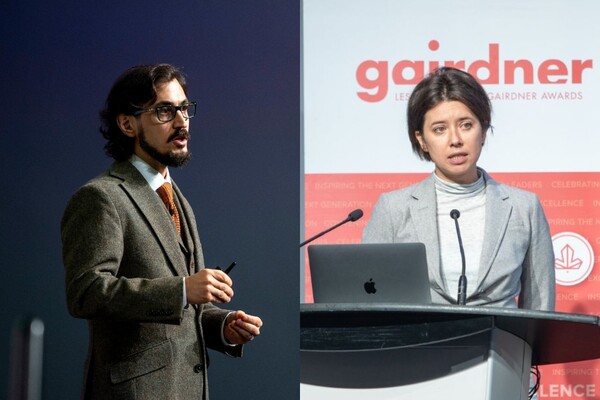Genome Scientist Tim Hughes Awarded Canada Research Chair

“We need something cheerful in our lives right now,” says Tim Hughes as he beams from the screen, alluding to the dazzling backdrop behind him aimed at brightening the pandemic gloom.
Hughes, a professor of molecular genetics in the Donnelly Centre for Cellular and Biomolecular Research at the Temerty Faculty of Medicine, hasn’t left his house much since the start of the coronavirus crisis. He spends his days on video calls, overseeing research and boosting the morale of his team of computational biologists who, like him, are fortunate to be able to work safely from home.
As the world continues to grapple with coronavirus, they are looking for answers to the fundamental question of how cells interpret the information in their genomes. Knowing this would allow scientists to predict how genetic mutations cause disease, but also how pathogens hijack our genes to their own benefit to potentially help us fight future outbreaks.
"Our overarching goal is to find out how cells look at their DNA and figure out what to do about it" - Professor Tim Hughes
The globally renowned genome scientist, and one of the world’s most cited researchers, according to data company Clarivate that specializes in academic publishing, Hughes has now been named Tier 1 Canada Research Chair in Decoding Gene Regulation, a prestigious appointment by the federal government reserved for scientists and scholars who are world-leading in their fields.
The appointment will enable him to remain at the forefront of the exploration of the human genome, which remains no less mysterious than when it was first sequenced almost two decades ago.
“Our overarching goal is to find out how cells look at their DNA and figure out what to do about it,” says Hughes, who is also John W. Billes Chair of Medical Research. “One problem is that we don’t even have a good handle on how the cells know where the genes are.”
The 20,000 or so protein-coding genes make up mere two percent of the total human DNA. But Hughes’ attention is focused on the remaining 98 per cent of the genome which holds the clues to how the genes are regulated.
How should a cell be?
Whether a cell resides in the brain or in the kidney, its genome is the same as in all other cells in the body. A cell’s identity and function stem from the genes that are switched on, or expressed, in it at any given time, in a process orchestrated by thousands of DNA-binding proteins.
Scattered across the genome, mostly in the non-coding part, are “regulatory regions”, stretches of the DNA code, or sequence, on average 150 basepairs long, which contain landing sites for various DNA binding proteins. Among them are the transcription factors which directly switch genes on or off by binding to sequence “motifs” often only 5-10 basepairs in length. Humans have 1500 transcription factors, each binding to one or a few motifs, which can be repeated in the genome between tens and hundreds of thousands of times. It’s thought that there are two million regulatory regions, each containing a distinct set and arrangement of motifs and thus recognized by numerous transcription factors, that control gene expression in some way.
The goal of matching transcription factors to their motifs—and ultimately the genes they regulate—has turned out career-defining for Hughes.
“I did not know that it would turn out to be much more difficult than anything else and that I would be basically working on the same problem for my entire life,” says Hughes.
A part of the problem is that for any gene there can be dozens of distinct regulatory regions. And since each regulatory region is unique, this makes it difficult to draw general conclusions from studying individual genes and transcription factors that regulate them, which is how most research in the field is done.
“This seems like it would be an almost impossible starting point but it’s really important because these regulatory sequences are where most of the functional DNA in human is located and in many other species,” he says, referring to genome sequencing studies that have identified numerous associations between regulatory regions and various diseases.
Which is why Hughes’ approach has been to meticulously go through each and every human transcription factor and identify their landing sites.
The work involves fishing out DNA motif sequences bound by different transcription factors and using computational modelling to predict which genes they regulate. They have so far identified motifs for thousands of transcription factors in diverse species, including hundreds in human, which are stored in one of the largest open-access databases of its kind, Cis-BP.
Genome interpreter
Hughes did not set out to become a biologist. He first studied physics, at the University of Iowa, but switched halfway to music, which had always been a big part of his life. After graduating and realizing that being a professional musician “was too much work for the money and that I’d be better off having a day job and playing music at night”, he obtained another degree, in electrical engineering.
An interest in molecular biology came through friends. Thanks to good grades and a lab job, he earned a PhD place at the renowned Baylor College of Medicine in Houston, TX, where he studied telomeres, the chromosomal ends involved in cellular aging.
Next came a postdoctoral stint with Rosetta InPharmatics, a Seattle startup co-founded by four academics, including a Nobel laureate. The company was using the then cutting-edge DNA microarray technology to measure expression levels of thousands of genes at once. He published a landmark paper showing that hundreds of genetic mutations and drug molecules induce distinct gene expression patterns in otherwise identical cells and that these patterns can offer insights into how genes cooperate under different scenarios. The experience propelled Hughes to the forefront of genomic revolution that saw biology transform into a data science—and one he had an edge in thanks to his unconventional training.
Hughes joined U of T as faculty in 2001, starting his own lab at the Banting and Best Department of Medical Research before moving in 2004 to the newly founded Donnelly Centre.
Beyond motif mapping, the lab’s varied research includes the 2018 publication of the first complete chromosome map of the cannabis genome to aid the investigation of the plant’s potential in medicine and industry.
In other projects, they revealed clues to how genomes evolve. They found evidence suggesting that the largest family of human transcription factors, comprising 700 members, evolved to silence DNA elements inserted by ancient viruses and that over time these sequences became coopted into regulatory motifs for the human genes. More recently, they found that several large transcription factor families that are found across species bind different motif sequences much more often than previously thought, which could help explain how species evolve at the molecular level.
Initially mislabeled as “junk DNA”, the vast swaths of the noncoding genome have proven to be anything but. But with so much still unknown, Hughes might have to spend the rest of his career figuring it out.
Follow us on LinkedIn and Twitter to keep up with Donnelly Centre news.
News



